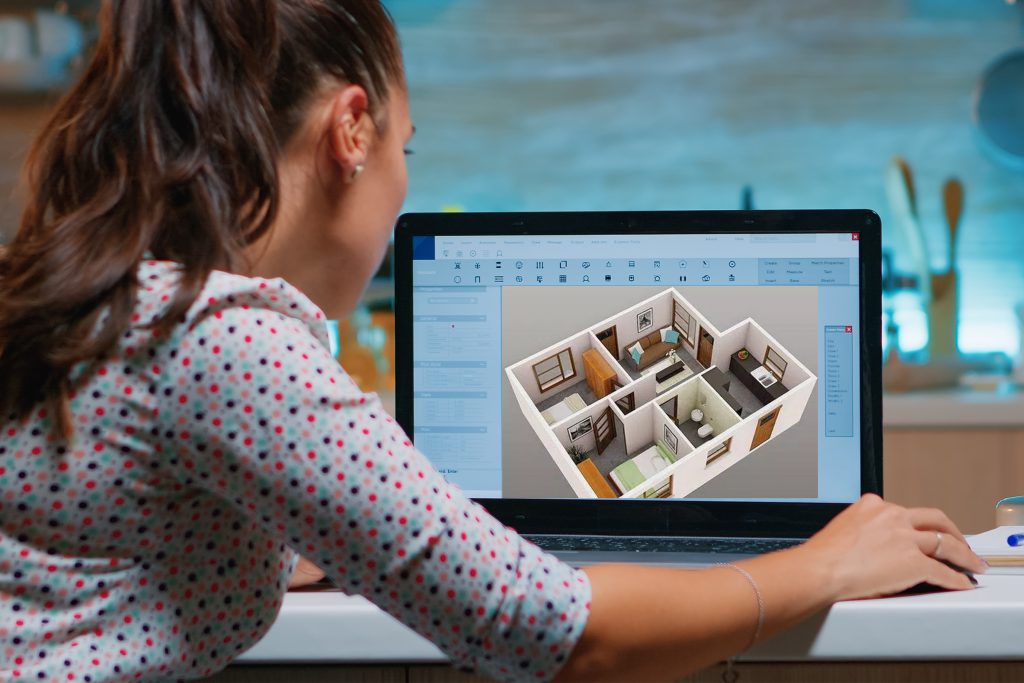Interior design is a complex and multi-faceted field that is made significantly easier with a professional 3D rendering service.
By visualizing different finishes and materials, playing with the layout, and experimenting with floor spaces, architects can bring their ideas to life and present concepts to a client quickly and efficiently.
How much do 3D product renders cost, and how does that differ from an architectural render? Average pricing starts at around $800, although a lot depends on the scale and scope of the project.
How Is 3D Rendering Used in Interior Design?
3D rendering has transformed how interior designers work and share their inspiration.
As a gateway to successful client relationships and on-spec finishes, real estate businesses and architects can incorporate 3D rendering into their promotional materials, allowing them to explore a client’s vision and make the process both exciting and realistic.
What Are the Benefits of Using 3D Interior Rendering Services?
They allow you to:
- Work through project options and available finishes such as lighting schemes, window placement, and decor.
- Collaborate with clients and decision-makers, using shareable tools to discuss ideas and preferences.
- Use precision planning to envision how an interior design scheme would look at different times of the day.
- Distribute drawings and plans quickly without manual labor each time a client or designer wishes to consider a new scheme.
- Have perfect finishes every time. One of the biggest issues in interior design is that the client signs off on a concept, but is unhappy with the result. 3D renders ensure each option is explored and examined before proceeding with the physical work.
- identify potential issues. Design flaws or inaccurate measurements are easy to spot during the rendering process, enabling the contractor to catch a problem before it becomes costly.
The biggest selling point for interior rendering is that it offers a significant competitive advantage, placing your business ahead of companies reliant on time-consuming 2D drawings and architectural designs.
What Is the Process of Creating a 3D Interior Design Render?
3D rendering makes the design, decision-making, and selection process straightforward for interior decorators, architects, and clients.
Whether a commercial or private property, the process usually works like this:
- The client or contractor provides the 3D rendering artist with the initial information, such as measurements, images, or concepts they’d like to replicate in full digital 3D.
- Next, the designer uses that information to establish the geometry, modeling, and imagery required, rendering scenes for review.
- Once the mock-up has been agreed upon, the designer executes the model. This stage includes refining lighting and entering precise metrics to dictate the size, position, and measurements of the render.
- The final stage includes incorporating furniture, decorations, and furnishings, and completing the 3D graphic to simulate a real-world experience.
The interior designer may require post-processing in some projects, such as adding in backgrounds, skies, or color adjustments.
Which 3D Interior Rendering Professional Should I Hire?
Regardless of the purpose or size of your interior design project, 3D rendering can be an invaluable asset. There are several advantages to streamlining your workflow at each stage, whether you choose to work with an individual designer, a small studio, or a large agency.
Using a smaller design studio or a single designer doesn’t mean you won’t get a highly efficient service—often, you receive better quality because your 3D render artist isn’t juggling multiple projects! Some smaller studios also rely on simpler software options, but some experts are multidisciplinary.
If you choose a larger 3D studio to provide your interior renders, you should expect to pay slightly more since their overheads will be higher, but more professionals participating in each design can mean access to a broader scope of expertise. For example, if you have access to an in-house interior visualizer, they’ll provide a dedicated support service to ensure you have input into your finished render.
You’ll usually find that larger studios have a range of rendering software to choose from—although a lot depends on whether you prefer a one-on-one collaboration or the fastest possible project turnaround!



